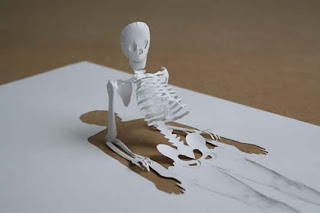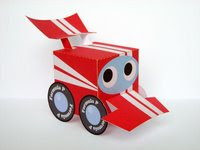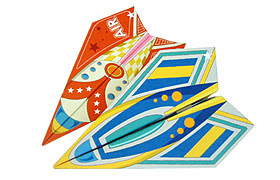Origami is the Japanese art of paper folding. It literally translates as ori (folding) gami (paper). In Japan, Children learn origami at their mothers' knees. In the West, children are learning it at school. Research has shown that paper-folding, particularly in the elementary school years, is a unique and valuable addition to the curriculum.
Origami is not only fun, but it is also a valuable method for developing vital skills. As a teacher or parent you can adopt this creative hobby for skill development among children.
Therapists have found that origami has a modifying affect on their patients, and they often use it as a diagnostic and therapeutic tool. This post is about the benefits you get when you keep your kids busy with these art/crafts activities.
Origami for skill development: It can be adopted by educators, teachers, Psychologists, Physicians, Parents for educational, developmental, and therapeutic aspects. Origami is good for any age: from kids, those who start learning all by themselves, to persons of mature years who don't stop developing their own individuality. Schools have begun to realize the educational value of origami.
It is a great hands-on activity and a wonderful resource that teaches students how to follow directions.
Below is a list of partial academic and cognitive skills involving Origami.

- Listening Skills,
- Social Studies,
- Visual Memory,
- Reading Skills,
- Sequential Memory,
- Visual-Spatial Motor Skills,
- Writing Skills, Concentration,
- Verbal and Visual Memory,
- Mathematics Eye-Hand Coordination,
- Logical Reasoning,
- Spatial Relationship,
- Fine Motor Skills,
- Problem Solving.
Origami has a therapeutic effect on children. Many have found Origami to be an inherently relaxing activity and its use as a stress reduction technique.
"Oriland.com" has mentioned 10 reasons to be involved in origami:
1. Development of fine 'motor skills' of both hands.
2. Development of intellectual abilities.
3. Development of creative abilities.
4. Activation of the Right and Left hemispheres of the brain.
5. Development of imagination.
6. Development of attention.
7. Development of memory.
8. Development of patience.
9. Emotional and aesthetic experiences.
10. Joy, satisfaction and pride in your own work!
1. Development of fine 'motor skills' of both hands.
2. Development of intellectual abilities.
3. Development of creative abilities.
4. Activation of the Right and Left hemispheres of the brain.
5. Development of imagination.
6. Development of attention.
7. Development of memory.
8. Development of patience.
9. Emotional and aesthetic experiences.
10. Joy, satisfaction and pride in your own work!
Useful links and Related posts:
* The educational benefits of origami
* Origami in Education and Therapy
* The Educational Benefits of Origami
* Learn origami at the internet!
* 'Benefits of origami'
* Useful links and resources for paper crafts!
* Origami - A Great Way to Train Fine Motor and Cognitive Skills
* The educational benefits of origami
* Origami in Education and Therapy
* The Educational Benefits of Origami
* Learn origami at the internet!
* 'Benefits of origami'
* Useful links and resources for paper crafts!
* Origami - A Great Way to Train Fine Motor and Cognitive Skills















